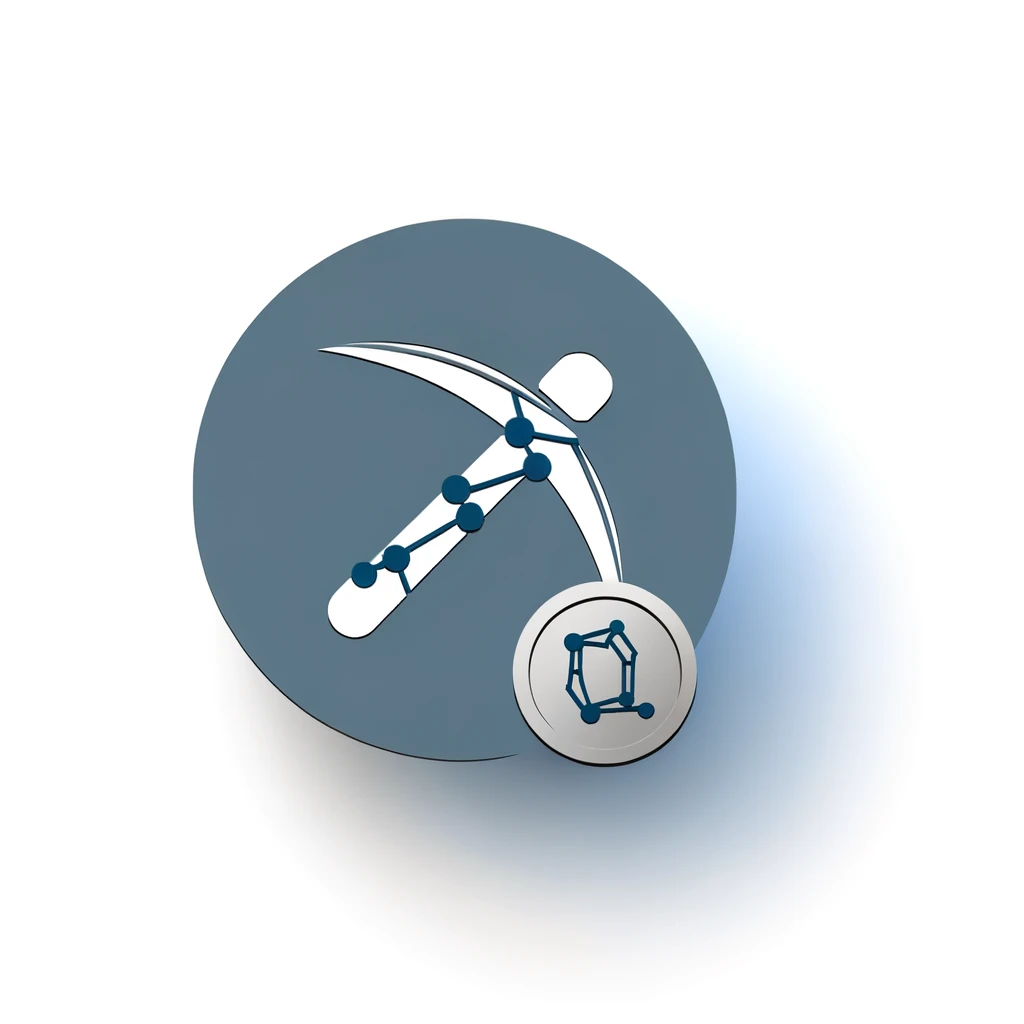Table of Contents:
Introduction: What is Dynex Mining?
Introduction: What is Dynex Mining?
Dynex (DNX) is a unique cryptocurrency that utilizes the DynexSolve algorithm for mining. This algorithm sets it apart from other cryptocurrencies and introduces specific challenges and opportunities for miners. Understanding how Dynex mining works is crucial for anyone looking to get involved in this field.
Mining Dynex involves solving complex mathematical problems to validate transactions on the Dynex blockchain. Miners use specialized hardware and software to perform these calculations, and in return, they earn Dynex coins as rewards. The process is competitive, as miners race to solve these problems first to claim the rewards.
Get $500 free Bitcoin mining for a free testing phase:
- Real daily rewards
- 1 full month of testing
- No strings attached
If you choose to buy after testing, you can keep your mining rewards and receive up to 20% bonus on top.
One of the key aspects of Dynex mining is the mining difficulty. This metric adjusts over time to ensure that blocks are mined at a consistent rate, regardless of the number of miners or the total computational power in the network. As more miners join the network, the difficulty increases, making it harder to mine new blocks.
In this article, we will delve into the intricacies of Dynex mining difficulty, explore the challenges it presents, and discuss solutions to optimize your mining efforts.
Understanding Dynex Mining Difficulty
Understanding Dynex Mining Difficulty
Dynex mining difficulty is a dynamic parameter that adjusts to maintain a stable block generation time. It ensures that blocks are mined at a consistent rate, regardless of fluctuations in the network's computational power. This mechanism is essential for the stability and security of the Dynex blockchain.
The difficulty level is recalculated periodically based on the total hashrate of the network. Hashrate refers to the total computational power being used by miners to solve the cryptographic puzzles. When the hashrate increases, the difficulty also rises to prevent blocks from being mined too quickly. Conversely, if the hashrate decreases, the difficulty lowers to ensure blocks are not mined too slowly.
To illustrate, if the network's hashrate doubles, the difficulty will adjust to make the mining process twice as hard. This balance keeps the block time close to the target interval, which is crucial for the proper functioning of the Dynex blockchain.
Understanding this concept is vital for miners because it directly impacts their mining efficiency and profitability. As the difficulty increases, miners need more powerful hardware and optimized software to maintain their mining rewards. Therefore, staying informed about difficulty trends and adjusting your mining setup accordingly is key to successful Dynex mining.
How Dynex Mining Difficulty is Calculated
How Dynex Mining Difficulty is Calculated
The calculation of Dynex mining difficulty is a systematic process designed to ensure a stable block generation time. This process involves several key steps and factors:
- Target Block Time: Dynex aims to maintain a specific interval between the creation of new blocks. This target block time is a predefined value set by the Dynex protocol.
- Actual Block Time: The actual time taken to mine recent blocks is measured. This is the average time it took to mine a set number of previous blocks.
-
Difficulty Adjustment Formula: The Dynex protocol uses a formula to adjust the difficulty based on the ratio of the target block time to the actual block time. The formula can be represented as:
New Difficulty = Current Difficulty · (Actual Block Time / Target Block Time)
- Network Hashrate: The total computational power of the network, or hashrate, is a crucial factor. As the hashrate increases, the difficulty must be adjusted upwards to maintain the target block time.
For example, if the target block time is 10 minutes, but the actual block time over the last period was 8 minutes, the difficulty will increase. This adjustment ensures that future blocks will take closer to 10 minutes to mine, balancing the network's performance.
By continuously recalculating the difficulty, the Dynex network remains stable and secure, providing a predictable environment for miners. Understanding this calculation helps miners anticipate changes and adjust their strategies accordingly.
Challenges of Increasing Dynex Mining Difficulty
Challenges of Increasing Dynex Mining Difficulty
As Dynex mining difficulty increases, miners face several significant challenges. These challenges can impact both the efficiency and profitability of mining operations. Here are some of the key issues:
- Higher Computational Power Requirements: As difficulty rises, miners need more powerful hardware to solve the cryptographic puzzles. This often means investing in more advanced and expensive mining rigs.
- Increased Energy Consumption: More powerful hardware consumes more electricity. This leads to higher operational costs, which can reduce overall profitability, especially in regions with high energy prices.
- Reduced Mining Rewards: With higher difficulty, the chances of successfully mining a block decrease. This means miners may receive fewer rewards over time, impacting their return on investment.
- Greater Competition: As more miners join the network and the difficulty increases, the competition to mine new blocks intensifies. This can make it harder for individual miners to succeed without joining mining pools.
- Hardware Wear and Tear: Increased computational demands can lead to faster wear and tear on mining equipment. This may result in more frequent hardware replacements and maintenance costs.
These challenges require miners to continuously adapt and optimize their operations. By staying informed about difficulty trends and investing in efficient hardware, miners can mitigate some of these issues. Additionally, joining mining pools can help individual miners compete more effectively in a high-difficulty environment.
Adapting to Dynex Mining Difficulty Changes
Adapting to Dynex Mining Difficulty Changes
Adapting to changes in Dynex mining difficulty is crucial for maintaining profitability and efficiency. Here are some strategies to help miners stay ahead:
- Upgrade Hardware: Investing in more powerful and energy-efficient mining rigs can help you keep up with increasing difficulty. Look for hardware with high hash rates and low power consumption.
- Optimize Software: Use mining software that allows for fine-tuning and optimization. This can help you get the most out of your hardware and reduce energy costs.
- Join Mining Pools: By joining a mining pool, you can combine your computational power with other miners. This increases your chances of successfully mining blocks and earning rewards.
- Monitor Difficulty Trends: Keep an eye on difficulty trends and adjust your mining strategy accordingly. Tools and resources like minerstat can provide valuable insights and help you make informed decisions.
- Energy Management: Consider mining in regions with lower energy costs or using renewable energy sources. This can significantly reduce your operational expenses.
By implementing these strategies, miners can better adapt to changes in Dynex mining difficulty. Staying flexible and proactive is key to maintaining a successful mining operation in a dynamic environment.
Optimizing Your Mining Setup for Dynex
Optimizing Your Mining Setup for Dynex
Optimizing your mining setup for Dynex is essential to maximize efficiency and profitability. Here are some key steps to achieve an optimal setup:
- Select the Right Hardware: Choose mining rigs with high hash rates and energy efficiency. ASIC miners and high-end GPUs are popular choices for Dynex mining.
- Efficient Cooling Solutions: Mining hardware generates a lot of heat. Invest in effective cooling solutions like high-quality fans or liquid cooling systems to maintain optimal performance and extend hardware lifespan.
- Use Mining Software: Utilize specialized mining software that supports Dynex. Software like minerstat can help you monitor and manage your mining rigs, ensuring they run at peak efficiency.
- Overclocking and Underclocking: Fine-tune your hardware settings to find the right balance between performance and energy consumption. Overclocking can boost hash rates, while underclocking can reduce power usage and heat generation.
- Regular Maintenance: Perform regular maintenance on your mining rigs. Clean dust from components, check for hardware issues, and update software to keep your setup running smoothly.
- Monitor Performance: Continuously monitor your mining performance using tools and dashboards. Track metrics like hash rate, temperature, and power consumption to identify areas for improvement.
By following these steps, you can optimize your mining setup for Dynex and enhance your overall mining efficiency. A well-optimized setup not only increases your chances of earning rewards but also helps you manage operational costs effectively.
Tools and Resources for Monitoring Dynex Mining Difficulty
Tools and Resources for Monitoring Dynex Mining Difficulty
Monitoring Dynex mining difficulty is crucial for making informed decisions and optimizing your mining operations. Here are some essential tools and resources to help you stay updated:
- minerstat: minerstat offers a comprehensive suite of tools for monitoring and managing your mining rigs. It provides real-time data on mining difficulty, hashrate, and profitability, helping you adjust your strategy as needed.
- Blockchain Explorers: Use blockchain explorers to track the latest blocks, transactions, and difficulty adjustments on the Dynex network. These platforms offer detailed insights into network activity and trends.
- Mining Calculators: Mining calculators can help you estimate your potential earnings based on current difficulty levels, hashrate, and energy costs. These tools are invaluable for planning and optimizing your mining setup.
- Forums and Communities: Join online forums and communities dedicated to Dynex mining. These platforms are great for sharing experiences, tips, and updates on difficulty changes and mining strategies.
- News Websites: Stay informed about the latest developments in the cryptocurrency world by following news websites and blogs. These sources often provide updates on network changes, including difficulty adjustments.
By leveraging these tools and resources, you can effectively monitor Dynex mining difficulty and make data-driven decisions to enhance your mining operations. Staying informed and proactive is key to maintaining a competitive edge in the dynamic world of cryptocurrency mining.
Future Trends in Dynex Mining Difficulty
Future Trends in Dynex Mining Difficulty
As the Dynex network continues to grow, several trends are likely to influence mining difficulty in the future. Understanding these trends can help miners prepare and adapt their strategies accordingly:
- Increasing Network Hashrate: As more miners join the Dynex network, the total computational power, or hashrate, is expected to rise. This will lead to higher mining difficulty, requiring miners to invest in more powerful hardware to stay competitive.
- Advancements in Mining Hardware: Technological advancements in mining hardware, such as more efficient ASICs and GPUs, will play a significant role. These improvements can help miners cope with increasing difficulty by providing higher hash rates and better energy efficiency.
- Energy Efficiency Focus: With rising energy costs and environmental concerns, there will be a greater emphasis on energy-efficient mining solutions. Miners may adopt renewable energy sources or more efficient cooling systems to reduce operational costs.
- Regulatory Changes: Governments and regulatory bodies are increasingly focusing on cryptocurrency mining. Future regulations could impact mining operations, influencing factors like energy consumption and hardware usage.
- Decentralization Efforts: Efforts to further decentralize the Dynex network could lead to changes in mining difficulty. A more decentralized network may distribute computational power more evenly, impacting difficulty adjustments.
By staying informed about these future trends, miners can better prepare for changes in Dynex mining difficulty. Adapting to these trends will be crucial for maintaining profitability and ensuring the long-term success of mining operations.
Conclusion: Overcoming Dynex Mining Difficulty for Better Results
Overcoming Dynex mining difficulty requires a combination of strategic planning, continuous adaptation, and leveraging the right tools and resources. By understanding how difficulty is calculated and the challenges it presents, miners can make informed decisions to optimize their operations.
Key strategies include:
- Investing in powerful and energy-efficient hardware to keep up with increasing difficulty.
- Using specialized mining software for fine-tuning and optimization.
- Joining mining pools to enhance your chances of earning rewards.
- Monitoring difficulty trends and adjusting your strategy accordingly.
- Exploring energy-efficient solutions to reduce operational costs.
Staying informed about future trends and potential regulatory changes will also help miners remain competitive in the evolving landscape of Dynex mining. By being proactive and adaptable, miners can overcome the challenges of increasing difficulty and achieve better results in their mining endeavors.
FAQ on Dynex Mining Difficulty
What is Dynex mining difficulty?
Dynex mining difficulty is a dynamic parameter adjusting to maintain a consistent block generation time. It ensures stability and security of the Dynex blockchain by recalculating based on the network's total computational power, or hashrate.
How is Dynex mining difficulty calculated?
The difficulty is calculated using a target block time, actual block time, and the network hashrate. The Dynex protocol adjusts the difficulty using a formula: New Difficulty = Current Difficulty × (Actual Block Time / Target Block Time), ensuring block times remain stable.
What challenges do miners face with increasing Dynex mining difficulty?
Mining Dynex becomes more challenging as difficulty increases. Miners need more powerful hardware, face higher energy consumption, reduced rewards, greater competition, and increased hardware wear and tear.
How can miners adapt to changes in Dynex mining difficulty?
Miners can adapt by upgrading hardware, optimizing software, joining mining pools, monitoring difficulty trends, and managing energy consumption. Tools like minerstat can provide valuable insights for making informed adjustments.
Which tools and resources are useful for monitoring Dynex mining difficulty?
Useful tools and resources include minerstat for real-time monitoring, blockchain explorers, mining calculators, forums and communities, and news websites that offer updates on difficulty trends and mining strategies.






